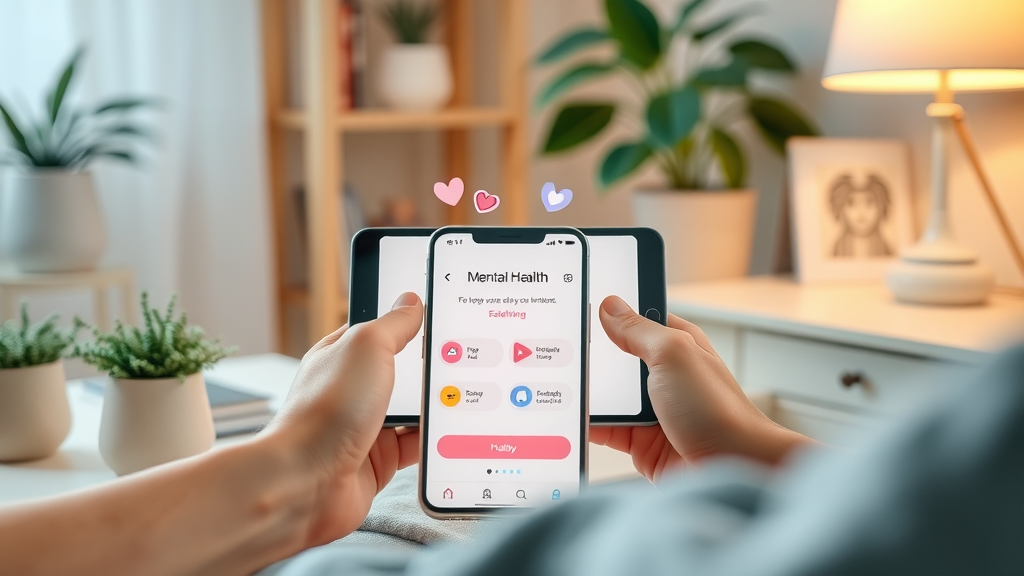Did you know that 1 in 5 adults in the United States experiences a mental health issue each year ? Yet, despite growing awareness, millions still face the silent struggle alone. This guide unlocks how therapy and counseling can be life-changing tools—empowering you to reclaim hope, resilience, and emotional health. Whether seeking support for yourself or a loved one, your journey to healing can begin here.
Why Therapy and Counseling Matter: The Silent Crisis in Mental Health
In today’s fast-paced world, the pressures of everyday life, major transitions, and unforeseen challenges mean that almost everyone will face emotional hurdles at some point. Mental health issues—such as anxiety, depression, and relationship problems—are on the rise. Yet a harmful stigma still prevents many from seeking help. Recognizing the importance of therapy and counseling is crucial not only for individuals but also for families and communities as a whole.
Therapy services play a vital role in offering a confidential, supportive environment where you can understand and change patterns of behavior that hold you back. Whether facing a specific issue or simply seeking growth, working with mental health professionals means you’re no longer tackling your struggles alone. Early intervention through therapy or counseling leads to better outcomes for a spectrum of mental health conditions, ensuring you regain control over your wellbeing.
If you or someone close to you is silently enduring emotional pain, know that help is available. Taking proactive steps with mental health services transforms lives—and can be the difference between persistent struggle and genuine healing.

- The vital role of therapy and counseling in mental health
- The types of therapy services available
- How to choose qualified mental health professionals for your journey
- Answers to the most common therapy-related questions
Understanding Therapy and Counseling: Foundations for Healing
At the heart of therapy and counseling lies a collaborative relationship—one that honors your unique story and empowers personal growth. Both approaches are designed to support you in navigating a broad range of emotional difficulties. While they share many similarities, subtle distinctions can influence which path best fits your needs. Therapy, often synonymous with psychotherapy, tends to address deeper or long-standing mental health issues using evidence-based techniques. It works to uncover root causes and foster lasting change over time.
In contrast, counseling services may emphasize guidance for specific issues, life adjustments, or practical problem-solving in the present. Both therapy and counseling offer safe spaces to process challenges, develop coping strategies, and foster resilience. Most importantly, engaging with a qualified mental health professional can help you break free from persistent patterns, clarify your life goals, and strengthen relationships—building a foundation for lasting wellness.
Different mental health professionals bring expertise in specialized areas and therapy modalities, ranging from short-term interventions to long-term care. Choosing between therapy and counseling (or even integrating both) depends on your preference, your health condition, and the outcomes you hope to achieve.
| Approach | Focus | Typical Issues Addressed | Duration | Professionals Involved |
|---|---|---|---|---|
| Therapy | Root cause analysis, long-term emotional growth | Depression, anxiety, trauma, complex mental health conditions | Medium to long term (months to years) | Psychologists, Licensed Therapists, Clinical Social Workers |
| Counseling | Short-term problem-solving, guidance, adjustment | Stress, relationship issues, life transitions, coping skills | Short to medium term (weeks to months) | Counselors, Marriage and Family Therapists, Coaches |

Therapy Services: Options Tailored for Your Needs
Therapy services are not one-size-fits-all. The right approach depends on your personal story, goals, and the mental health challenges you wish to address. Whether you’re struggling with ongoing depression, facing a recent life upheaval, or seeking support for a loved one, there’s a spectrum of therapy services designed to help. This flexibility allows care to be truly tailored to every individual, couple, or family—ensuring that support feels personalized and meaningful.
Modern therapy and counseling services range from traditional in-person sessions to online therapy, telehealth, or even group interventions. The key is finding what feels safe and effective for you. No matter your starting point, working one-on-one with a licensed therapist or as part of a group, you can expect guidance grounded in proven techniques and genuine compassion.
Let’s explore the core types of therapy services so you can envision which path aligns best with where you are right now—and where you want to be.
Individual Therapy: One-on-One Support with a Mental Health Professional
Individual therapy offers a unique space to focus entirely on you—with all the attention and expertise of a skilled mental health professional. Whether you’re navigating daily stress, a specific issue, or complex patterns from your past, individual therapy creates a safe haven for self-exploration. Here, you can develop coping skills, process life events, and gain insights into your feelings and behaviors, all at your own pace.
Many people find that individual therapy services help them better manage health conditions like anxiety disorders, depression, or trauma. Through proven approaches such as cognitive behavioral therapy or psychodynamic therapy, your licensed therapist helps you identify strengths, clarify goals, and build resilience. This powerful collaboration often leads to increased confidence, healthier relationships, and a more fulfilling life.
Individual therapy is available in-person, online, or through teletherapy platforms, making it more accessible than ever before. Choosing to invest in your mental wellbeing through one-on-one care is often the turning point towards lasting change and personal growth.
Family Therapy: Strengthening Relationships and Communication
Relationships are at the core of human experience, but even the closest families can experience strain and conflict. Family therapy creates a supportive environment where all voices are heard and respected. Guided by mental health professionals specializing in family dynamics, this approach aims to strengthen communication, resolve conflicts, and foster healthier bonds among family members.
Family therapy services often help address patterns that may be causing stress, misunderstandings, or persistent tension—such as grief, trauma, behavioral challenges, or transitions like divorce. By developing practical tools for empathy and collaboration, families learn to navigate tough conversations, rebuild trust, and support one another through life’s challenges.
Whether you’re seeking help for a specific issue or simply want to enhance your family’s connection, this type of therapy offers a space to grow and heal together—improving everyone’s mental health along the way.

Types of Therapy: Matching Modalities to Your Mental Health Condition
Understanding the types of therapy available empowers you to select a modality that aligns with your mental health condition and personal preferences. Each therapeutic approach is rooted in specific theories and interventions, tailored to help you reach your emotional and psychological goals. Cognitive Behavioral Therapy (CBT) is widely used for depression and anxiety, focusing on changing negative thought patterns and behaviors for more positive outcomes.
Dialectical Behavior Therapy (DBT) expands on CBT by helping people manage intense emotions and develop stronger coping mechanisms, often for those struggling with borderline personality disorder or self-harm. Psychodynamic therapy delves into childhood experiences and subconscious processes that influence present day behavior, giving deep insight into patterns you may wish to change.
Specialized approaches like family and couples therapy are tailored for relationship dynamics, while group therapy provides a sense of shared understanding and community support. Each type of therapy and counseling may be recommended depending on your specific mental health issues, preferences, or the advice of your health professional. Here are some of the most popular modalities:
- Cognitive Behavioral Therapy (CBT)
- Dialectical Behavior Therapy (DBT)
- Psychodynamic Therapy
- Family and Couples Therapy
- Group Therapy
Counseling Services: Practical Guidance for Everyday Challenges
Everyday life is filled with challenges—from managing stress to adapting to major transitions like moving, changing careers, or starting or ending relationships. Counseling services offer practical, short-term guidance to help you handle these challenges effectively. Unlike therapy, which might explore deeper patterns or root causes, counseling is often action-focused, aiming to equip you with tools and strategies that can be put into practice immediately.
Whether it’s counseling during a career shift, coping with academic stress, or navigating difficult family dynamics, mental health professionals providing these services help you clarify your priorities and take concrete steps toward your goals. They may also provide education and resources for managing common health conditions, ensuring you don’t face life’s hurdles alone.
If you’re seeking immediate relief and ongoing personal development, counseling services can provide clarity, enhance your coping skills, and help you build the confidence to overcome obstacles big and small.
Choosing the Right Mental Health Professional for Effective Therapy and Counseling
Finding the right mental health professional is a cornerstone of successful therapy and counseling. Your journey toward healing is deeply personal—and working with the right provider ensures you get reliable, compassionate, and evidence-based support. Mental health professionals may include psychologists, clinical social workers, licensed therapists, counselors, or psychiatrists, each offering specific expertise and therapeutic approaches.
When selecting a provider, consider credentials, licensing, areas of specialization, and therapy styles. Ask about their experience treating mental health conditions similar to yours, and don’t hesitate to interview multiple professionals before making a decision. Your comfort, trust, and sense of partnership are essential for progress.
Many health services and medical centers offer directories or referral support to connect you with highly qualified professionals. Online platforms now make it easier than ever to find a therapist who meets your needs—no matter your location or preferences for in-person or remote care.

"There is no health without mental health. Seeking therapy and counseling is a brave first step toward lifelong healing." – Leading Health Professional
Your First Therapy Session: What to Expect
Starting therapy for the first time can be daunting, but understanding what to expect can make the process much smoother. During your initial therapy session, your mental health professional will focus on getting to know you—discussing your background, current challenges, and what you hope to achieve through therapy and counseling. This is a collaborative process, and you’ll have plenty of opportunities to ask questions and express concerns.
The first session typically covers practical matters like confidentiality, session structure, and logistics such as scheduling or payment. You may be asked about your physical and mental health history, family relationships, and any previous experiences with therapy services. This information helps create a personalized plan designed to address your specific health conditions and goals.
Remember: there are no right or wrong answers during your first meeting. Your comfort and honesty are valued—your therapist is there to support, never judge. Over time, you’ll build a therapeutic alliance that is key to healing and growth.
Therapy Sessions and Health Conditions: When to Seek Help
Deciding when to seek therapy and counseling can be confusing—especially if you aren’t sure whether your concerns “qualify” for professional support. In truth, therapy sessions benefit anyone facing emotional distress, persistent mental health challenges, or significant life changes. Common health conditions addressed in therapy include anxiety disorders, depression, post-traumatic stress, relationship difficulties, and more.
You don’t need a formal diagnosis to get started. Therapy is for anyone wanting to understand and change unhelpful patterns, manage stress, or simply grow as a person. If you notice ongoing sadness, isolation, difficulty functioning at work or home, or an increase in unhealthy behaviors, it may be time to consider therapy sessions with a qualified health professional.
Here are some frequent reasons people reach out for therapy and counseling support:
- Anxiety or depression
- Grief or trauma recovery
- Family or relationship issues
- Substance abuse or behavioral challenges
- Managing chronic health conditions

Making Therapy and Counseling Accessible: Finding the Right Therapy Service
Accessibility is a critical factor for those seeking therapy and counseling services . With a growing number of options—ranging from private practice to community clinics and digital health platforms—there’s never been a better time to start your healing journey. Many mental health professionals now offer teletherapy, embracing technology to break down barriers posed by geography, cost, or limited mobility.
Investigate what’s offered by your local health service or medical center, as well as online therapy directories. Consider therapy services covered by insurance, sliding-scale providers for more affordable options, and nonprofit organizations committed to expanding access. Don’t let stigma or uncertainty prevent you from reaching out—help is available, and you deserve support tailored to your needs.
When researching therapy and counseling providers, focus on those who specialize in your specific health conditions or types of mental health issues. Nurturing a connection with your chosen health professional is the first step toward meaningful change.
Support Beyond the Session: Tools and Resources for Mental Health
Healing doesn’t end when your session does. Expanding your support network with helpful resources can amplify the gains you achieve in therapy and provide extra comfort when you need it most. Today’s digital landscape offers a wealth of mental health tools and communities—empowering you to practice self-care, track progress, and connect with others who understand what you’re going through.
Many people benefit from online forums, peer support groups, and mobile apps that reinforce lessons from therapy sessions and make managing health conditions more manageable. Educational websites can help you and your loved ones better understand mental health issues, explore treatment options, and stay motivated to continue learning and growing.
Consider supplementing therapy and counseling services with these accessible supports:
- Crisis hotlines and peer support networks
- Mental health education websites
- Mobile apps for mood tracking and self-care
- Online forums and support groups

FAQs on Therapy and Counseling
What is the difference between therapy and counseling?
Therapy and counseling both support improved mental health, but their focus and scope may differ. Therapy (often psychotherapy) typically addresses long-standing patterns or complex mental health conditions, exploring deep-seated issues over a longer period. Counseling services are often more short-term and practical, targeting specific concerns or life transitions. Both involve collaboration with a trained mental health professional, and the best choice depends on your needs.
Do I need therapy or counselling?
If you are struggling with emotional distress, ongoing stress, relationship problems, or difficulty managing day-to-day life, seeking support from therapy or counseling can be highly beneficial. Professional support isn't only for those with severe mental health conditions; it's for anyone aiming to improve their emotional wellbeing or navigate challenges more effectively.
What is the difference between behavioral therapy and counseling?
Behavioral therapy is a specific type of therapy—such as Cognitive Behavioral Therapy (CBT)—designed to help you recognize and change patterns of behavior that contribute to mental health issues. Counseling may be broader, tackling everyday concerns and offering guidance or education. Behavioral therapy often involves structured sessions focused on specific symptoms, while counseling services may be less intensive or problem-focused.
Is therapy also called counseling?
While "therapy" and "counseling" are sometimes used interchangeably, therapy usually refers to in-depth, long-term treatment of mental health issues. Counseling typically describes short-term, solution-focused support. Both offer valuable assistance and can overlap, so your health professional will recommend the most effective pathway for your situation.
Take the First Step Toward Healing with Therapy and Counseling
Your journey to a healthier, happier life starts with a single step: Reach out for professional therapy and counseling services today and unlock the support you deserve. Ready to begin? Contact a trusted mental health professional now and invest in your lasting wellbeing.
 Add Row
Add Row  Add
Add 




Write A Comment